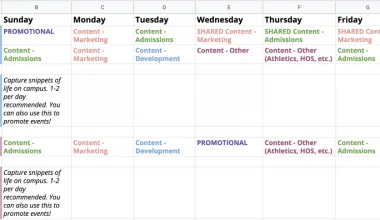Companies can use product positioning to make their products stand out and be known by employing channels of communication, pricing, or product quality. The significance of product positioning and its advantages will be covered in this article, along with the procedures you must take to position your product, the strategy, and a number of examples.
Product Positioning Overview
Product positioning is known as the process of establishing a new product’s position in consumers’ eyes. It involves examining the market and the positions of the competitors; determining where a new product stands in comparison to the competition; and promoting the product image of a specific brand.
Product Positioning Defined
Product positioning is a type of marketing that highlights your product’s advantages to a specific target market. Based on positive reactions to the product, marketers can choose which audience to target through market research and focus groups. Research can also reveal which product features appeal to consumers the most. Considering this data enables the optimization of marketing programs and the creation of powerful marketing messages that increase leads and sales.
Additionally, It helps the service or product stand out from similar ones on the market. You don’t have to limit product positioning to a single demographic as it is an important part of any marketing plan. A product could have the main target audience and a supplementary audience that is likewise intrigued by the item but may be interested in it differently. The process entails forging a specific image of a company and its goods in consumers’ minds and discovering the key advantages that set a given product apart from similar offerings from rival companies. The target audience of a brand is then informed about the difference using the most efficient communication methods.
Companies should make sure their customers find value in the information they offer them. Based on client needs, competing alternatives, the most efficient communication channels, and targeted messages, marketers need to decide the best ways to promote particular items and reach their target audience. Companies can develop messages that speak to the needs and desires of their customers and persuade them to make purchases by putting product positioning strategies into practice.
Qualities Of A Successful Product Positioning
Product positioning involves not only picking the best plan but also carrying it out correctly. A successful positioning plan should have a few certain qualities. These are what they are:
- Relevance: A product’s positioning should be appropriate for the audience it is intended for. It ought to take care of their demands and requirements.
- Clarity: A product’s positioning should be brief and clear. Customers should have no trouble understanding it.
- Differentiation: A product’s positioning needs to be distinct from that of its rivals. Customers won’t be able to recognize its value if this doesn’t happen.
- Consistency: A product’s positioning needs to be the same across all media. This covers everything from packaging to word-of-mouth to advertising.
- Believability: A product’s positioning needs to be credible. Customers won’t trust the company or the product if this doesn’t happen.
Advantages of Product Positioning
The top advantages of product positioning that demonstrate why it is one of the most successful marketing strategies :
- Finding a competitive advantage in a changing market
- Meeting customer expectations
- Reaffirming your brand’s name and its products
- Gaining customer loyalty.
- Developing an effective promotional strategy
- Attracting new customers.
- Boosting competitive strength.
- Launching new products.
- Showcasing new features of existing products
- Identifying a product’s key benefits and matching them with customers’ needs.
Product Positioning Examples
Examples of Product Positioning
There are many noteworthy examples of product positioning. Let’s examine a few of them.
#1. Jordan from Nike
Jordan by Nike is a prime example of positioning driven by emotions. The company positioned itself as a premium athleticwear brand and took the moniker Michael Jordan from the legendary basketball player. It made use of Jordan’s notoriety and appeal to build an aspirational brand that was linked to excellence and success.
As a result of its enormous success, the Jordan brand is currently one of the most valuable in the world.
#2. The BMW M Series
Among the examples of product positioning is BMW’s M Series, which works well with the use-based positioning method. The M Series was marketed as a high-performance line of vehicles built for use on racetracks and other tracks. Customers looking for an automobile that might provide them with an exciting driving experience found it appealing because of this.
#3. Energy Drinks by Red Bull
Red Bull promotes its energy drinks by extolling the advantages they offer. The beverages were tempting to people who needed an energy boost since they were designed to provide consumers with an extra rush of energy (wings).
Product Positioning Strategy
A product positioning strategy is a process of moving your product from its current position to its ideal one. It involves planning for how the market will perceive your product. In spite of the fact that we may state that “the product’s position is,” in actuality, your product has a life of its own.
What your customers think of your product is the only positioning that matters. If a customer isn’t considering it, your product isn’t there. It is a kind of marketing tactic that focuses on setting a product apart from its rivals. Effective communication of a brand’s competitive advantage is the main objective of a product positioning strategy in order to affect consumer perception.
Types of Product Positioning Strategies
A company can decide to position its goods in relation to the competition or strive to claim a distinctive niche in the market. There are 2 types of product positioning strategies:
#1. Relative Positioning:
A company is said to have chosen a competitive positioning strategy when it places its product in relation to the competition. Businesses in this situation research the products and target markets of their rivals in order to create a unique selling proposition (USP) that distinguishes their product from the competition. For instance, Apple’s iPhone was marketed as a high-end smartphone with superior design and usability versus its rivals.
#2. Absolute Positioning:
This refers to a company’s attempt to occupy a market niche that is currently unoccupied by any of its rivals. When this occurs, firms concentrate on developing a unique selling point (USP) for their product that distinguishes it from competing products on the market.
Attributes, feelings, and advantages are used to further materialize these two tactics. The five categories of product positioning techniques are as follows:
- Positioning based on characteristics.
- Positioning based on price.
- Positioning based on application or use.
- Positioning based on status or quality.
- Positioning depending on competitors
Even though a lot of effort is spent on product development, very few businesses consider how customers will react to the product once it has hit the market. Understanding the products you choose to market to the public is a key component of product positioning. Because of this, it’s crucial to consider what your customers may be thinking. Let’s look at these 5 main strategies for defining the position of your goods.
#1. Positioning Based on Characteristics
In order to foster relationships, brands give their products specific features. It’s done to influence people to make decisions based on product and brand attributes. Consider the automobile industry as an illustration.
#2. Positioning Based on Price
This tactic entails connecting your business with affordable prices. Brands frequently present themselves as the ones that provide goods or services at the most affordable prices. Consider supermarkets as an illustration. Due to their high turnover, extensive purchasing power, and cheaper shipping and distribution expenses, they can afford to offer clients products at lower prices.
#3. Positioning Based on Use or Application
Companies might also employ a particular use or application to position themselves. Healthy lifestyle enthusiasts generate a lot of demand for equipment that improves gym performance. As a result, many companies sell nutritional supplements.
#4. Positioning Based on Status or Quality
The brands we are discussing right now put more emphasis on their prestige or good quality than they do on their price. Sometimes a brand’s reputation is what draws customers to it. Take Rolex, for instance. This well-known watch brand is preferred by influential and wealthy people and is linked to sporting success and excellence.
#5. Positioning Based on Competitors
Utilizing alternatives offered by rival companies helps to distinguish products and showcase their benefits. It aids companies in differentiating their goods and showcasing their distinctiveness.
What Are the 4 Main Components of Product Positioning?
The four main components of product positioning are:
- Price.
- Product application/use.
- Target customers
- Competitive advantages
How Do You Develop Product Positioning?
The following are research methods to assist with the development of your product positioning:
- Interviews with previous, present, and potential clients
- Surveys
- On-site surveys
- Checking online to see what others are saying about you (forums, social media)
- Reviewing chat and customer service records.
- Reviewing sales calls
Why Is Positioning Important?
In comparison to other products or brands that are currently on the market, positioning helps create a brand personality of the product and the brand in the minds of the consumers.
What Are the 4 Branding Strategies?
The four brand strategies that help grow your business are line extension, brand extension, new brand strategy, and flanker/fight brand strategy.
What Is the Goal of Brand Positioning?
The goal is to generate a distinguishing impression on the buyer so that they link your brand with something particular and attractive that sets it apart from other products on the market.
Conclusion
An efficient product positioning plan requires a lot of data. You can explore new ideas, validate your current ones, and provide the groundwork for a fruitful go-to-market strategy by carrying out the appropriate research.
Product positioning is essential for clearly articulating the benefits of the product and explaining to the consumer what problem it addresses, which paves the way for the success of the product and the company. Feel free to refer back to the product positioning examples and strategy provided above for further clarification.
Product Positioning FAQs
What Are the 3 C’s of Positioning?
The 3 c’s of positioning are your customer, channel, and competition.
What Is the Positioning Process?
The positioning process is an ongoing, changing method that businesses use to make sure they have a strong, positive, and stable place in the minds of their customers. Companies can specify the placement of a brand, product, or service through the positioning process.
{
“@context”: “https://schema.org”,
“@type”: “FAQPage”,
“mainEntity”: [
{
“@type”: “Question”,
“name”: “What Are the 3 C’s of Positioning?”,
“acceptedAnswer”: {
“@type”: “Answer”,
“text”: “
The 3 c’s of positioning are your customer, channel, and competition.
“
}
}
, {
“@type”: “Question”,
“name”: “What Is the Positioning Process?”,
“acceptedAnswer”: {
“@type”: “Answer”,
“text”: “
The positioning process is an ongoing, changing method that businesses use to make sure they have a strong, positive, and stable place in the minds of their customers. Companies can specify the placement of a brand, product, or service through the positioning process.
“
}
}
]
}
Related Articles
- 7 strategies to Positioning your business in 2022 [with Case One study]
- BUSINESS BRANDING BOOKS: 10 Small BUSINESS BRANDING BOOKS
- How Cisco Brand Positioning Is Making Them Stronger.
- PRODUCT MARKETING STRATEGY: Overview, Examples, Job Description (+ free courses)
- Reasons why every product or brand needs a launch






